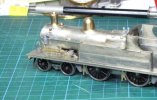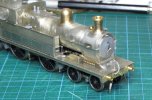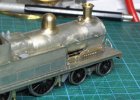Dave Holt
Western Thunderer
Front frame extensions and the curved cover between have been fixed in place. Apart from the lamp irons, a couple of more lubrication pipes and the VCR vacuum actuator, oh, and the steam heating cock, the front end of the loco is now finished.
looking more and more like a C13.
The diagonal pipe on the LH side of the boiler is the steam feed to the atomisers, I think.




Dave.
looking more and more like a C13.
The diagonal pipe on the LH side of the boiler is the steam feed to the atomisers, I think.




Dave.



















